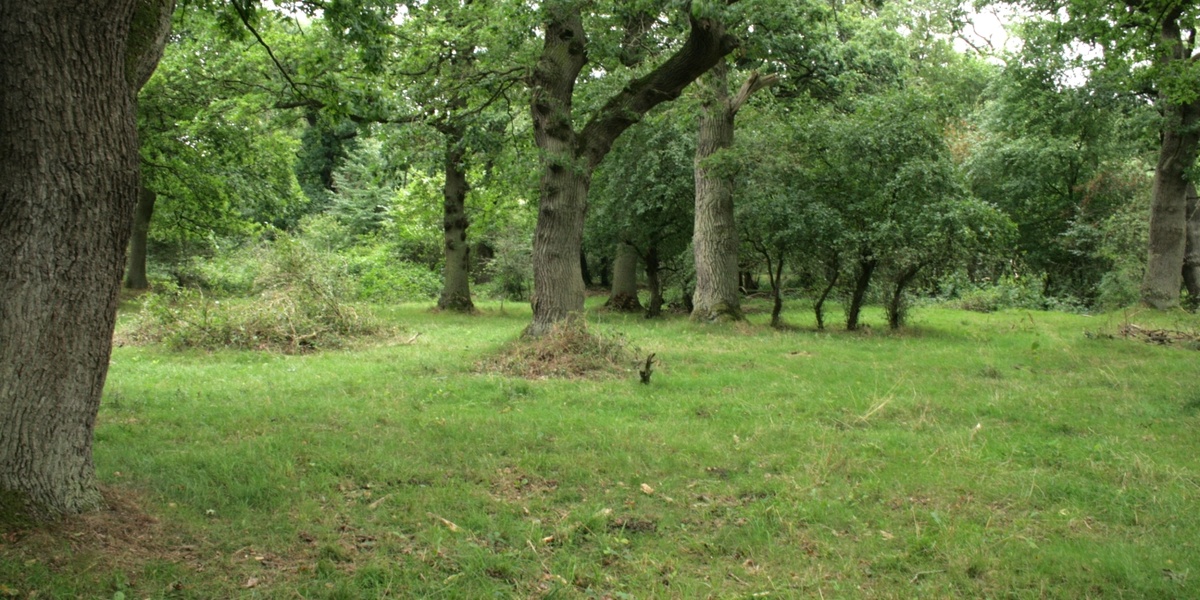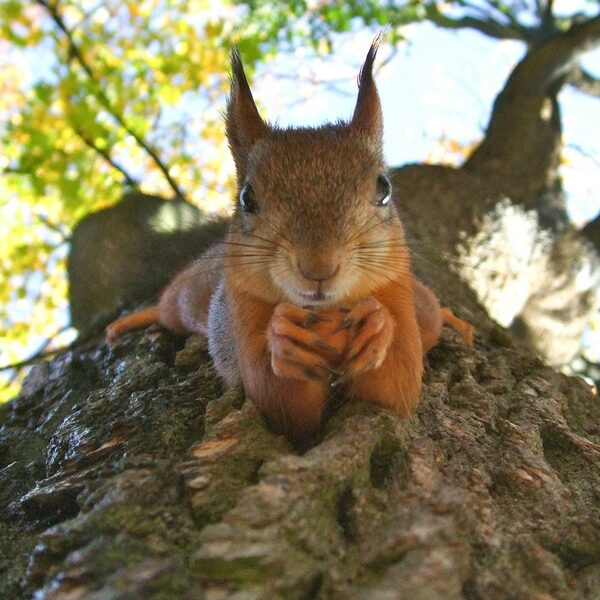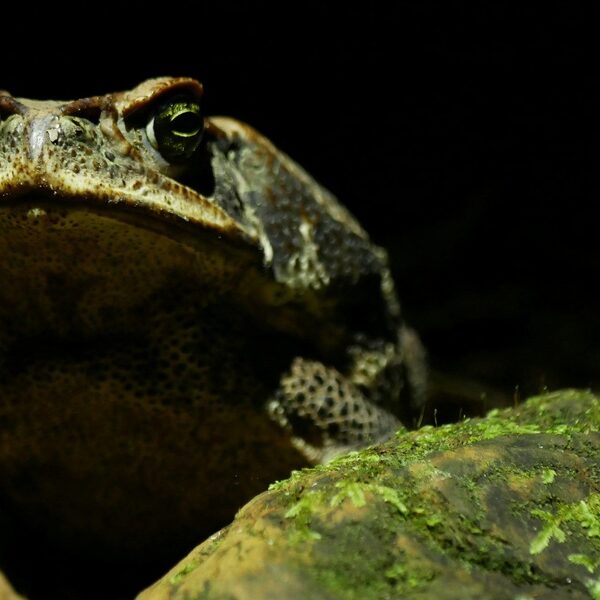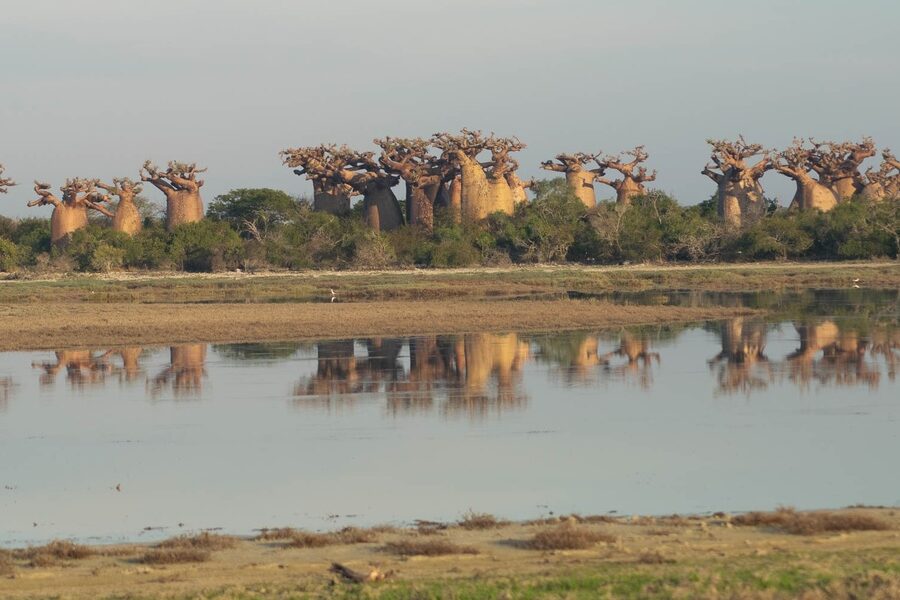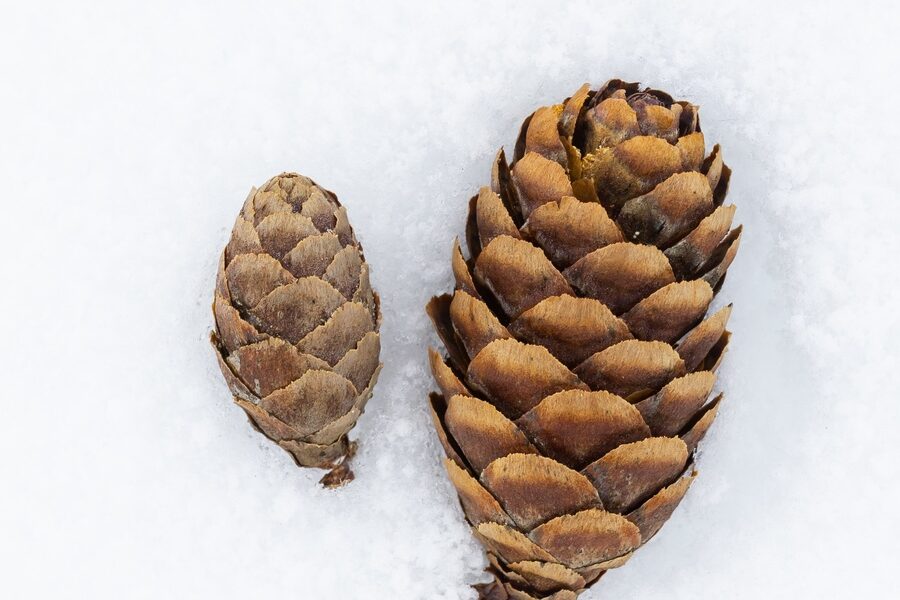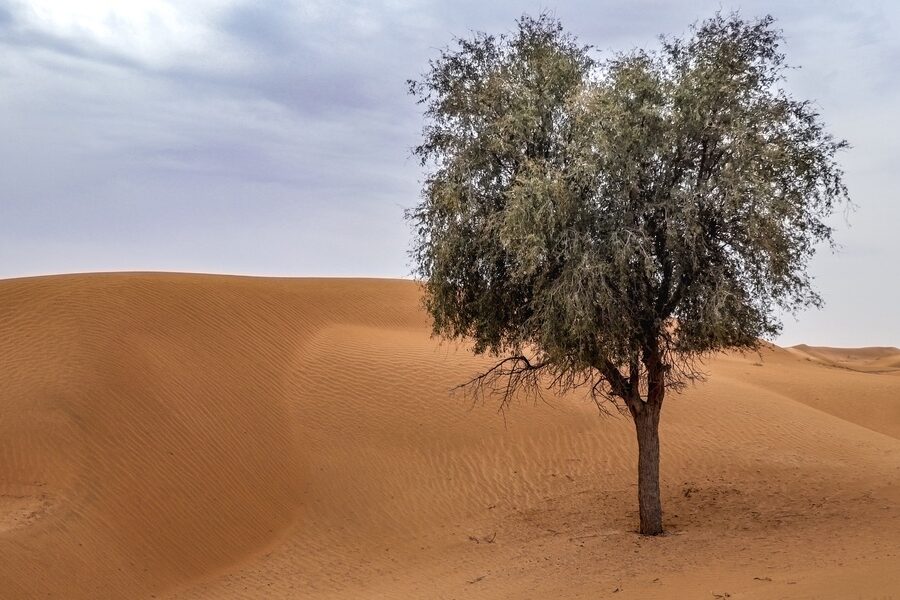From coastal windbreaks to city boulevards, trees shape Denmark’s seasons, wildlife and neighborhoods. Knowing which species thrive here makes walks and gardening more rewarding and helps with conservation or planting choices.
There are 49 Trees of Denmark, ranging from Ailanthus to Yew. For each species I list the Scientific name,Status,Typical height (m) so you can compare origin, conservation or naturalization and typical mature size — you’ll find that information below.
How current is this list and where does the data come from?
The list is compiled from national checklists, regional surveys and arboretum records; status notes indicate native, naturalized or introduced classifications and heights are typical mature ranges. Look for source notes under the table for dates and specific references.
Can I use the table to identify trees in the field?
The table is a quick reference for names, status and typical height but not a full ID key — use the Scientific names to cross-check field guides or apps, and confirm with leaves, bark and fruit for accurate identification.
Trees of Denmark
| Common name | Scientific name | Status | Typical height (m) |
|---|---|---|---|
| Common beech | Fagus sylvatica | Native | 30 |
| Pedunculate oak | Quercus robur | Native | 30 |
| Sessile oak | Quercus petraea | Native | 25 |
| Turkey oak | Quercus cerris | Introduced | 20 |
| Holm oak | Quercus ilex | Introduced | 15 |
| Scots pine | Pinus sylvestris | Native | 25 |
| Norway spruce | Picea abies | Introduced | 35 |
| Sitka spruce | Picea sitchensis | Introduced | 40 |
| European larch | Larix decidua | Introduced | 25 |
| Douglas fir | Pseudotsuga menziesii | Introduced | 40 |
| Silver birch | Betula pendula | Native | 25 |
| Downy birch | Betula pubescens | Native | 20 |
| Black alder | Alnus glutinosa | Native | 20 |
| Grey alder | Alnus incana | Native | 15 |
| European ash | Fraxinus excelsior | Native | 30 |
| Common lime | Tilia × europaea | Introduced | 25 |
| Small-leaved lime | Tilia cordata | Native | 20 |
| Norway maple | Acer platanoides | Native | 20 |
| Sycamore maple | Acer pseudoplatanus | Naturalized | 25 |
| Field maple | Acer campestre | Native | 12 |
| Horse chestnut | Aesculus hippocastanum | Introduced | 25 |
| Sweet chestnut | Castanea sativa | Introduced | 20 |
| English walnut | Juglans regia | Introduced | 15 |
| Wild cherry | Prunus avium | Native | 15 |
| Bird cherry | Prunus padus | Native | 12 |
| Black cherry | Prunus serotina | Naturalized | 20 |
| Apple, wild | Malus sylvestris | Native | 6 |
| Rowan | Sorbus aucuparia | Native | 10 |
| Whitebeam | Sorbus aria | Naturalized | 12 |
| Swedish whitebeam | Sorbus intermedia | Naturalized | 12 |
| Serviceberry | Amelanchier lamarckii | Introduced | 6 |
| Yew | Taxus baccata | Native | 15 |
| European holly | Ilex aquifolium | Introduced | 10 |
| Aspen | Populus tremula | Native | 20 |
| White poplar | Populus alba | Introduced | 20 |
| Hybrid poplar | Populus × canadensis | Introduced | 25 |
| White willow | Salix alba | Native | 20 |
| Crack willow | Salix × fragilis | Naturalized | 20 |
| Goat willow | Salix caprea | Native | 10 |
| English elm | Ulmus minor | Native | 20 |
| Wych elm | Ulmus glabra | Native | 25 |
| Hornbeam | Carpinus betulus | Native | 20 |
| London plane | Platanus × hispanica | Introduced | 30 |
| Ginkgo | Ginkgo biloba | Introduced | 20 |
| Thuja (Western redcedar) | Thuja plicata | Introduced | 30 |
| Cedrus libani | Cedrus libani | Introduced | 20 |
| Silver fir | Abies alba | Introduced | 30 |
| Poplar, black | Populus nigra | Naturalized | 25 |
| Ailanthus | Ailanthus altissima | Naturalized | 15 |
Images and Descriptions
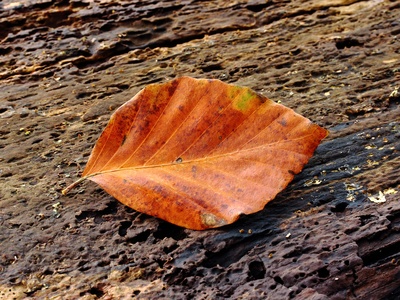
Common beech
Majestic deciduous forest tree with smooth grey bark and ovate leaves. Found in older beech woods and parkland across Denmark. Grows tall and dominant; excellent for shaded gardens and coppicing, but needs well-drained soils and space to mature.
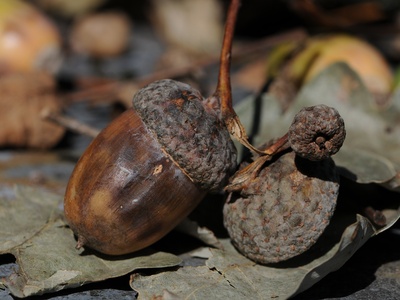
Pedunculate oak
Sturdy native oak with broad crown, lobed leaves and characteristic acorns on long stalks. Common in woodlands, hedgerows and parks across Denmark. Very long-lived; supports abundant wildlife and is prized for timber and veteran-tree interest.
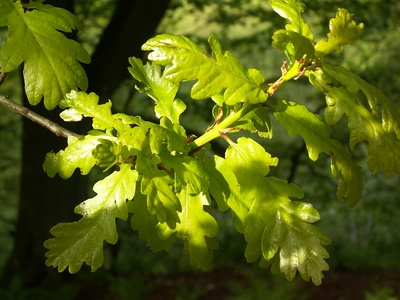
Sessile oak
Similar to pedunculate oak but with stalkless acorns and narrower leaves. Found on drier, upland soils and mixed forests in Denmark. Important native oak species; often used in rewilding and native-tree plantings.
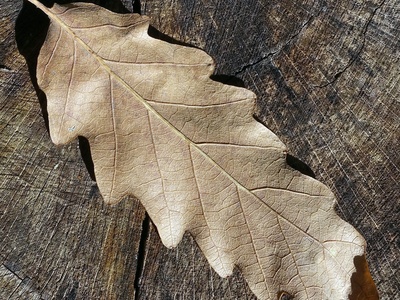
Turkey oak
Introduced oak with furry acorn cups and deeply lobed leaves. Planted in parks and estates; sometimes naturalized in southern Denmark. Tolerant of poor soils and urban conditions, though less wildlife-specialist than native oaks.
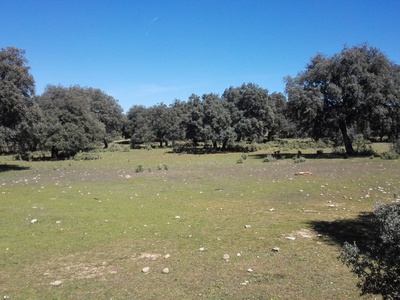
Holm oak
Evergreen oak with glossy, leathery leaves; grown mainly in sheltered parks and coastal gardens in mild sites. Rarely naturalized but used as ornamental deep-green specimen. Needs sheltered sites to avoid winter damage in Denmark.
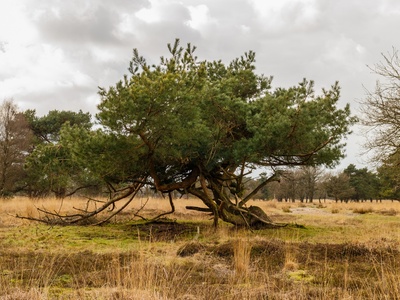
Scots pine
Long-lived conifer with flaky orange bark on the upper trunk and needle pairs. Found in dry, sandy soils and plantations across Denmark. Valuable for timber and biodiversity; tolerates poor soils and wind-exposed coastal sites.
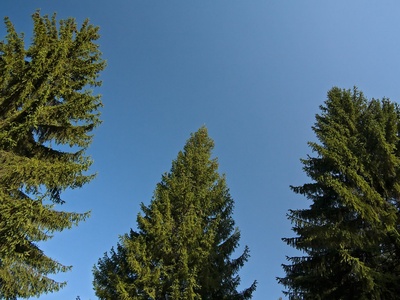
Norway spruce
Tall evergreen with pendulous branchlets and pointed cones; widely planted in forestry and parks. Common in plantations and shelterbelts though not native to Denmark’s wild flora. Fast-growing and used for timber and Christmas trees.
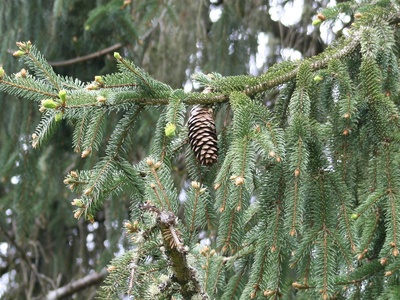
Sitka spruce
Fast-growing coastal conifer from North America now widely planted in Danish plantations. Tolerant of salty air and wind, used for timber. Needles flat and cones small; can dominate plantation landscapes.
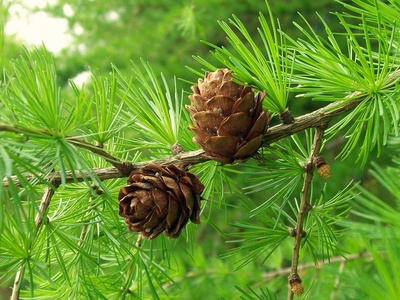
European larch
Deciduous conifer with soft needles turning golden in autumn. Planted in parks and old estates; occurs in forestry plots. Adds seasonal colour, but loses needles each winter; prefers well-drained soils and open positions.
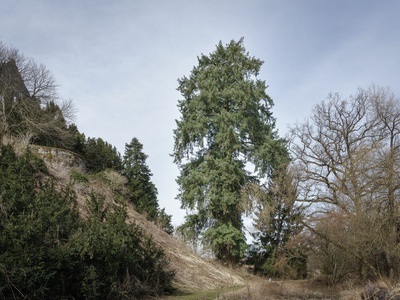
Douglas fir
Tall conifer with distinctive cones and banana-scented foliage on warm sites. Widely planted in parks and plantations in Denmark. Fast-growing and valuable timber tree; prefers sheltered, fertile sites.
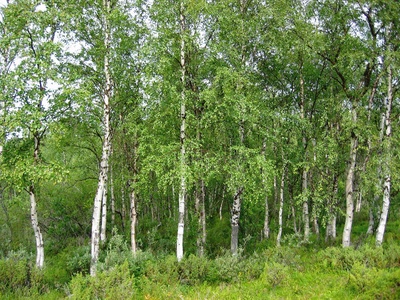
Silver birch
Slender native tree with white peeling bark and triangular leaves. Common in heathland margins, secondary woodland and urban plantings across Denmark. Pioneer species, easy to spot and useful for wildlife and soil improvement.
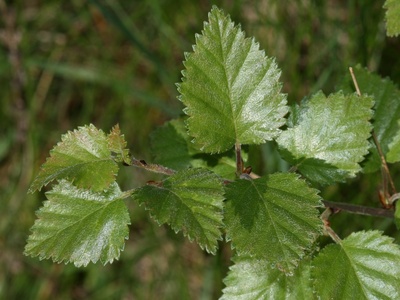
Downy birch
Native birch favouring wetter, acidic soils and bog margins. Recognisable by duller bark and hairier shoots. Common in peatland and wet woodland; hardy and important for early successional habitats.
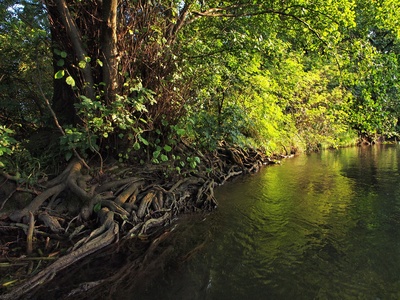
Black alder
Native wetland tree with glossy leaves and small woody cone-like fruits. Found along streams, ponds and damp ground across Denmark. Nitrogen-fixing roots improve poor soils; useful for riverside planting and stabilising banks.
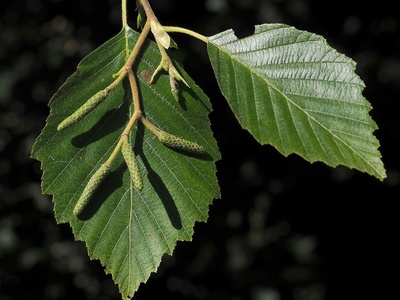
Grey alder
Smaller native alder of stream margins and damp open ground. Greyish undersides of leaves and paler bark distinguish it. Good pioneer species on poor soils; supports insects and stabilises riverbanks.
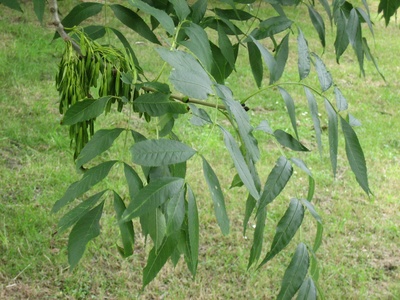
European ash
Tall, pinnate-leaved native common in mixed woods, hedgerows and streets. Distinctive opposite leaves and black buds. Widespread but threatened by ash dieback; historically valuable for woodwork and wildlife, now subject to replanting considerations.
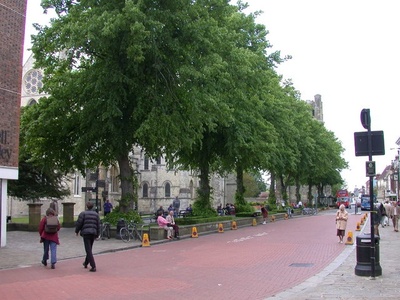
Common lime
Hybrid lime commonly planted in avenues and parks across Denmark. Large heart-shaped leaves and fragrant summer flowers attract bees. Excellent urban tree for shade and wildlife, but can be messy from flower drop.
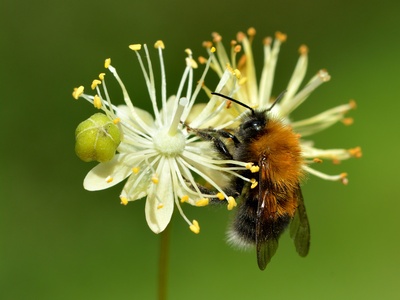
Small-leaved lime
Native lime with smaller leaves and fragrant yellow flowers. Found in ancient woods and hedgerows and used in park plantings. Loved by pollinators; coppices well and tolerates pruning for avenues.
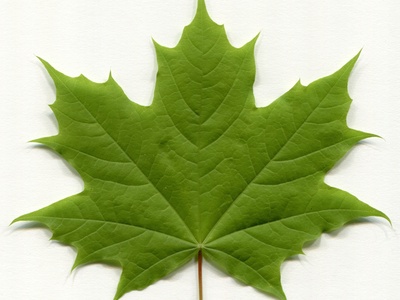
Norway maple
Native to northern Europe and commonly planted in towns and woodlands. Broad palmate leaves and milky sap when leaf stalk is broken. Hardy street and park tree, tolerates compacted soils though can spread in some locations.
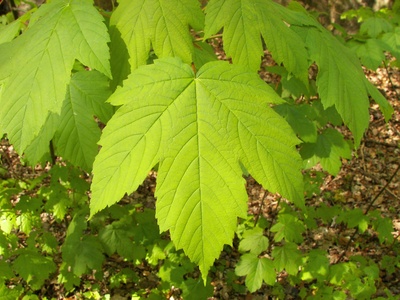
Sycamore maple
Large, robust maple with lobed leaves and winged samaras. Widely planted and now naturalized in woodlands and hedgerows. Tolerant of many soils and urban conditions; can colonise disturbed ground.
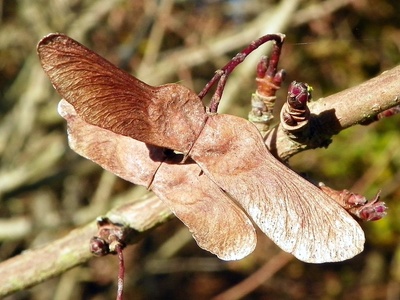
Field maple
Small native maple common in hedgerows and mixed woodland edges. Rounded crown and small lobed leaves; good for smaller gardens and urban planting. Wildlife-friendly and tolerant of training as coppice or pleached specimen.
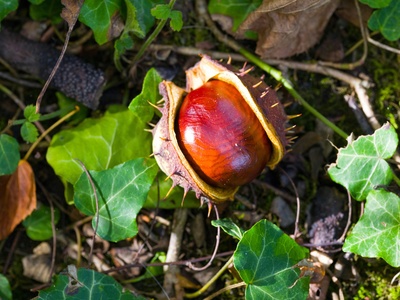
Horse chestnut
Famous avenue and park tree with large palmate leaves and showy white candle-like flowers in spring. Produces conkers in autumn. Popular ornamental though susceptible to leaf miners and bleeding canker.
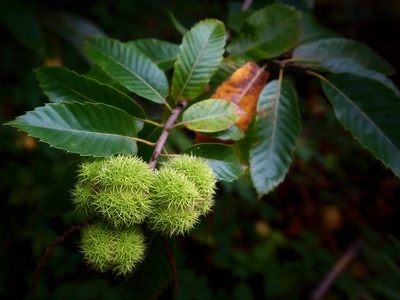
Sweet chestnut
Introduced semi-mature tree producing edible chestnuts; grows in parkland and old estates. Long-lived and tolerant of lime-rich soils; needs warm, sheltered sites for reliable fruiting in Denmark.
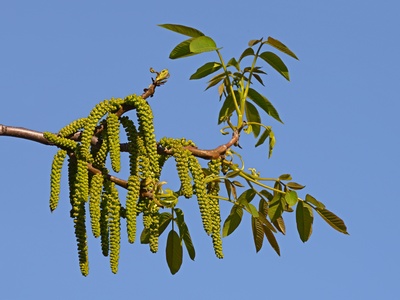
English walnut
Introduced nut-bearing tree planted in gardens and orchards. Pinnate leaves and large edible walnuts; prefers fertile, sheltered locations. Can be slow to establish but valued for nuts and timber.
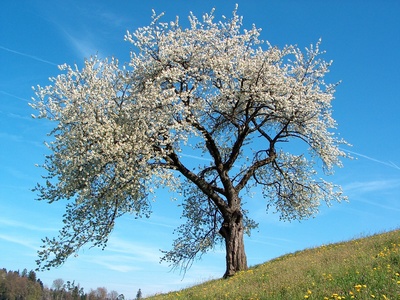
Wild cherry
Native deciduous tree with glossy leaves and spring white blossom followed by red cherries. Found in woodland edges and hedgerows. Attractive to birds and gardeners; self-seeds and prefers well-drained soils.
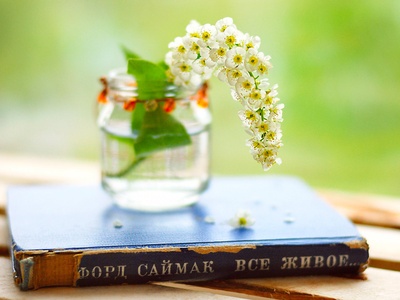
Bird cherry
Native small tree with racemes of fragrant white flowers and dark fruit. Common in hedgerows and damp woods. Flowers are scented and insects-loving; fruit eaten by birds though bitter to humans.
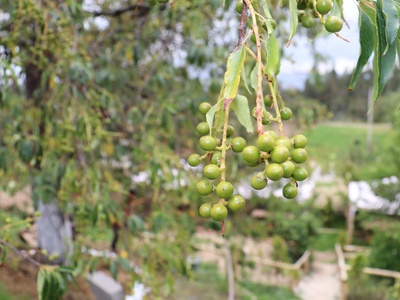
Black cherry
North American species that has naturalized in parts of Denmark. Tall tree with clusters of small dark berries and reddish bark. Can be invasive in woodland margins; produces dense shade and spreads by seed.
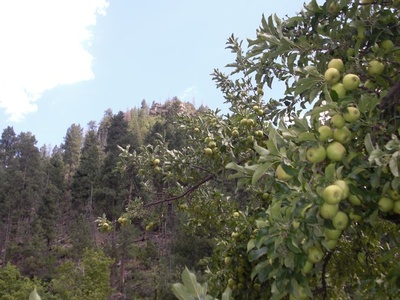
Apple, wild
Small native tree occurring in hedgerows and mixed woodland. White-pink blossom in spring and small tart fruits in autumn. Good for wildlife and traditional orchards; often grafted varieties replace wild forms in gardens.
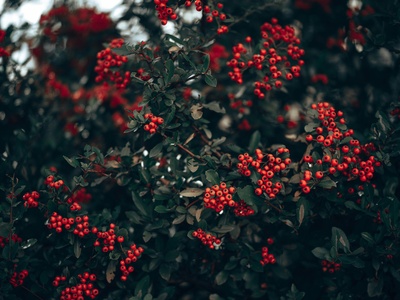
Rowan
Small native tree with pinnate leaves and bright orange-red berries in autumn. Common in open woodland, hedgerows and upland sites. Popular for birds and folk culture; tolerant of poor soils and coastal exposure.
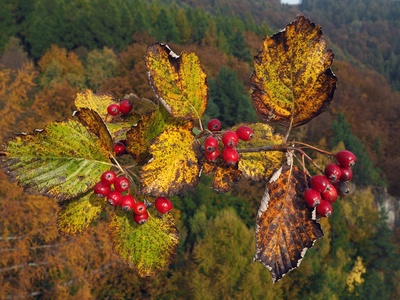
Whitebeam
Small to medium tree with grey-white leaf undersides and white blossom. Found in urban plantings and calcareous soils; berries attract birds. Good for small gardens and streets where a compact crown is wanted.
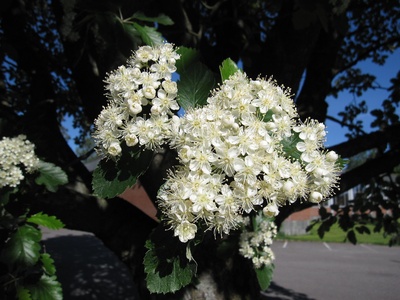
Swedish whitebeam
Hardy urban and park tree with lobed leaves and persistent orange-red berries. Commonly planted in Denmark for tough street conditions. Provides autumn interest and food for birds.
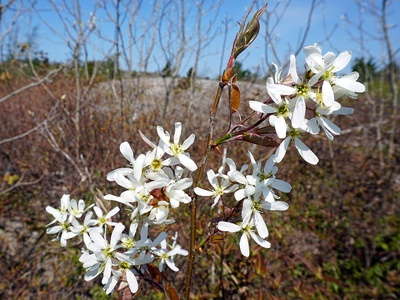
Serviceberry
Small ornamental tree with early spring white blossom and edible red fruits. Widely planted in gardens and parks for spring display. Versatile and hardy; fruits attract birds and can be eaten fresh.
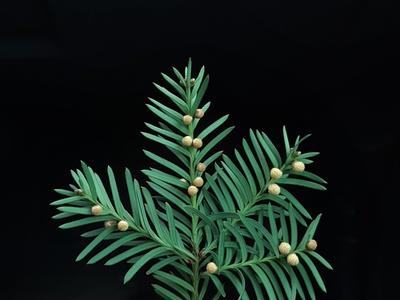
Yew
Slow-growing evergreen often found in churchyards, ancient hedgerows and shaded woodlands. Dense dark foliage and red arils; highly toxic foliage and seeds. Excellent for clipped hedges and small gardens where shade tolerance is needed.
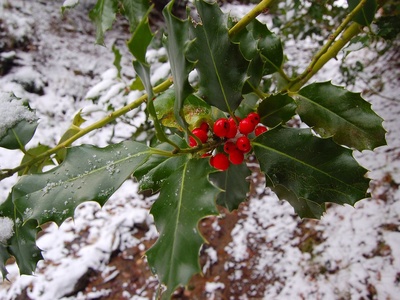
European holly
Evergreen tree or large shrub with glossy spiny leaves and red berries. Grows in sheltered coastal and parkland sites in Denmark. Valuable for winter berry display and wildlife; often used as an ornamental specimen.
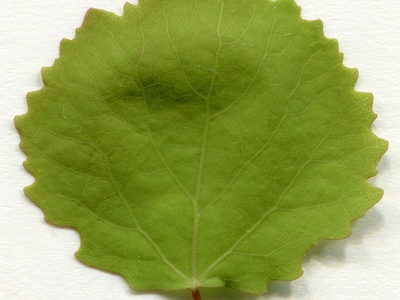
Aspen
Native poplar with trembling, rounded leaves on flattened petioles. Found in mixed woods and open areas, especially on lighter soils. Clonal growth from roots creates groves; attractive autumn colour and interesting bark.

White poplar
Introduced poplar with white-felted leaf undersides and lobed leaves. Planted in parks and shelterbelts; tolerates dry soils. Can sucker freely and spread; valued for ornamental contrast with pale foliage.
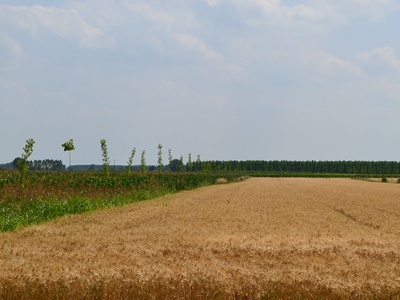
Hybrid poplar
Fast-growing hybrid used in shelterbelts and forestry. Large leaves and rapid height gain make it useful for quick screening. Shorter-lived than native poplars and can produce abundant root suckers.
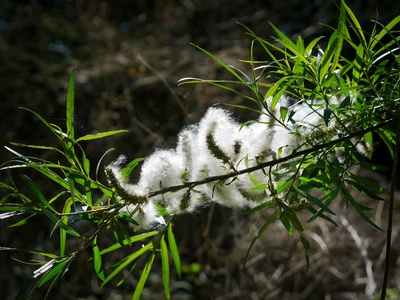
White willow
Large willow of riverbanks and wet ground with narrow grey-green leaves and drooping branches. Common along streams and in damp meadows. Good for riverbank stabilisation and wildlife, tolerant of waterlogged soils.
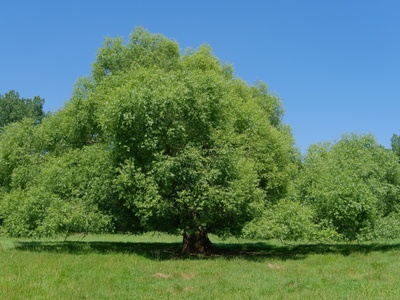
Crack willow
Hybrid willow adapted to riverside habitats and floodplains. Branches easily break off and root, aiding spread along waterways. Common in riparian zones; valuable for stabilising banks and providing wildlife habitat.
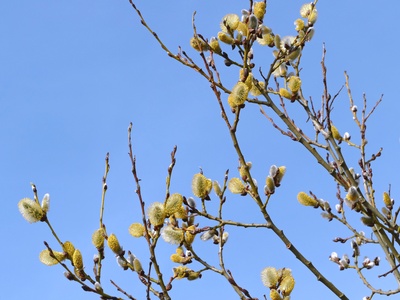
Goat willow
Small native tree with furry catkins (pussy willow) in early spring. Found in hedgerows, wood edges and open sites. Important early nectar source for bees and wildlife; tolerates a range of soils.
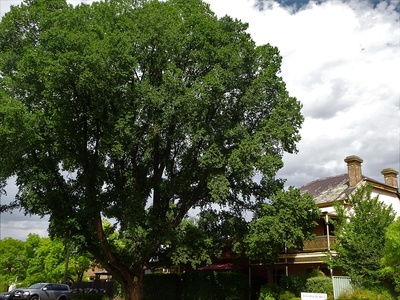
English elm
Historically widespread elm with asymmetrical leaves; now rare due to disease but scattered survivors and regrowth occur in Denmark. Valuable for biodiversity and heritage; monitor for disease-resistant individuals for planting.
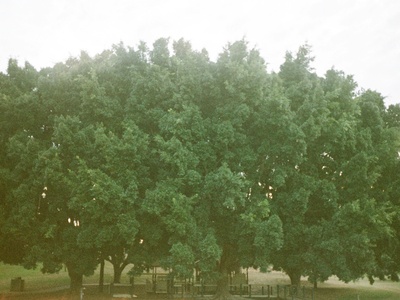
Wych elm
Large native elm of woodland and hedgerow sites. Wavy-margined leaves and robust growth habit. Elm populations reduced by disease but some mature specimens and suckering regrowth persist in rural areas.
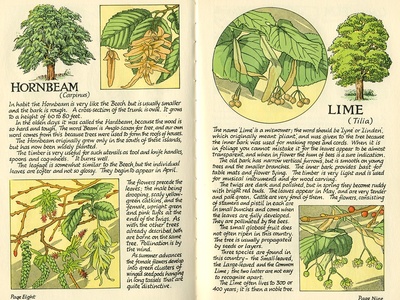
Hornbeam
Hardy deciduous tree with fluted trunk and serrated leaves, used historically in hedging and pleaching. Found in mixed deciduous woods and formal plantings. Tolerates pruning well and forms dense, trimmed screens.
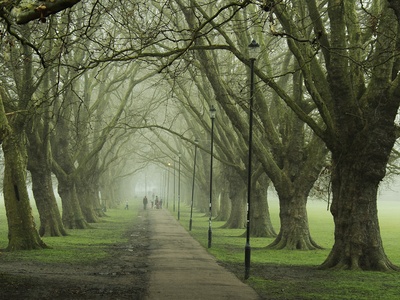
London plane
Big urban tree with patchy exfoliating bark and large maple-like leaves. Common in city streets and parks for pollution tolerance. Provides substantial shade but produces coarse leaf litter in autumn.
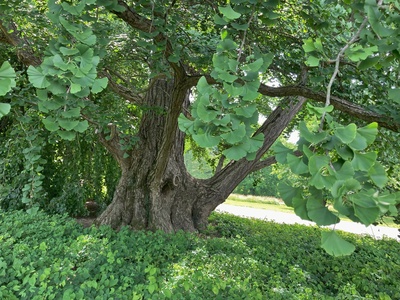
Ginkgo
Ancient and distinctive tree with fan-shaped leaves turning bright yellow in autumn. Widely planted in Danish towns and parks as a hardy urban specimen. Male cultivars preferred to avoid messy fruits.
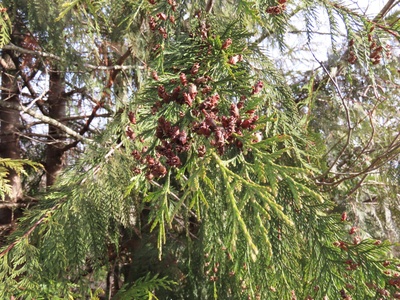
Thuja (Western redcedar)
Tall evergreen conifer used in shelterbelts and large gardens. Dense foliage and pyramidal form; tolerant of coastal sites. Valuable for windbreaks and screening but can form monocultures if overplanted.
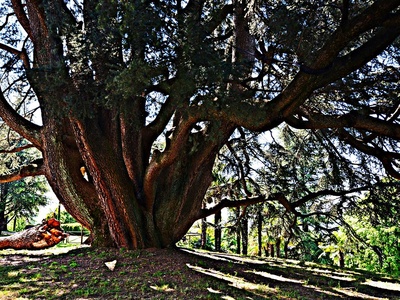
Cedrus libani
Mediterranean cedar occasionally planted as a stately park specimen. Spreading crown and aromatic wood; prefers well-drained, sunny sites and sheltered positions in Denmark. Striking specimen for large gardens or estate parks.
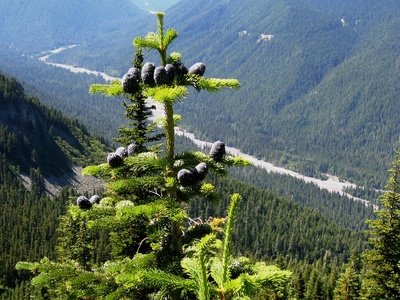
Silver fir
Tall conifer with softer needles and upright cones, planted in parks and arboreta. Prefers cool, moist conditions; used in landscape planting though less common than spruce or pine in Denmark.
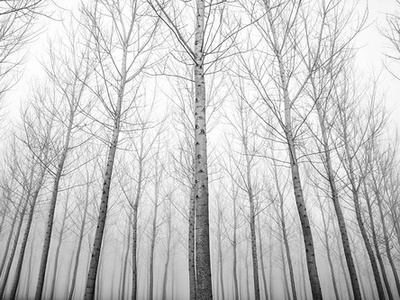
Poplar, black
Broad-leaved poplar found along rivers and lowland floodplains. Tolerant of wet soils and frequently planted in shelterbelts. Black poplars are important for riparian habitats though native stands are now scattered.
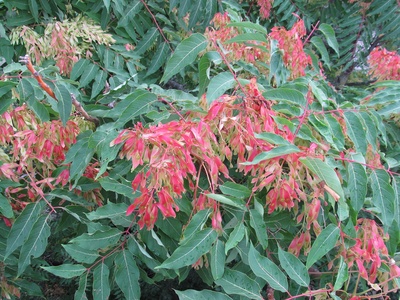
Ailanthus
Tree of Heaven, an invasive urban species with pinnate leaves and fast growth. Found in towns, roadsides and disturbed ground in Denmark. Tolerant of poor soils and heat; spreads by seed and suckers—control often needed.
